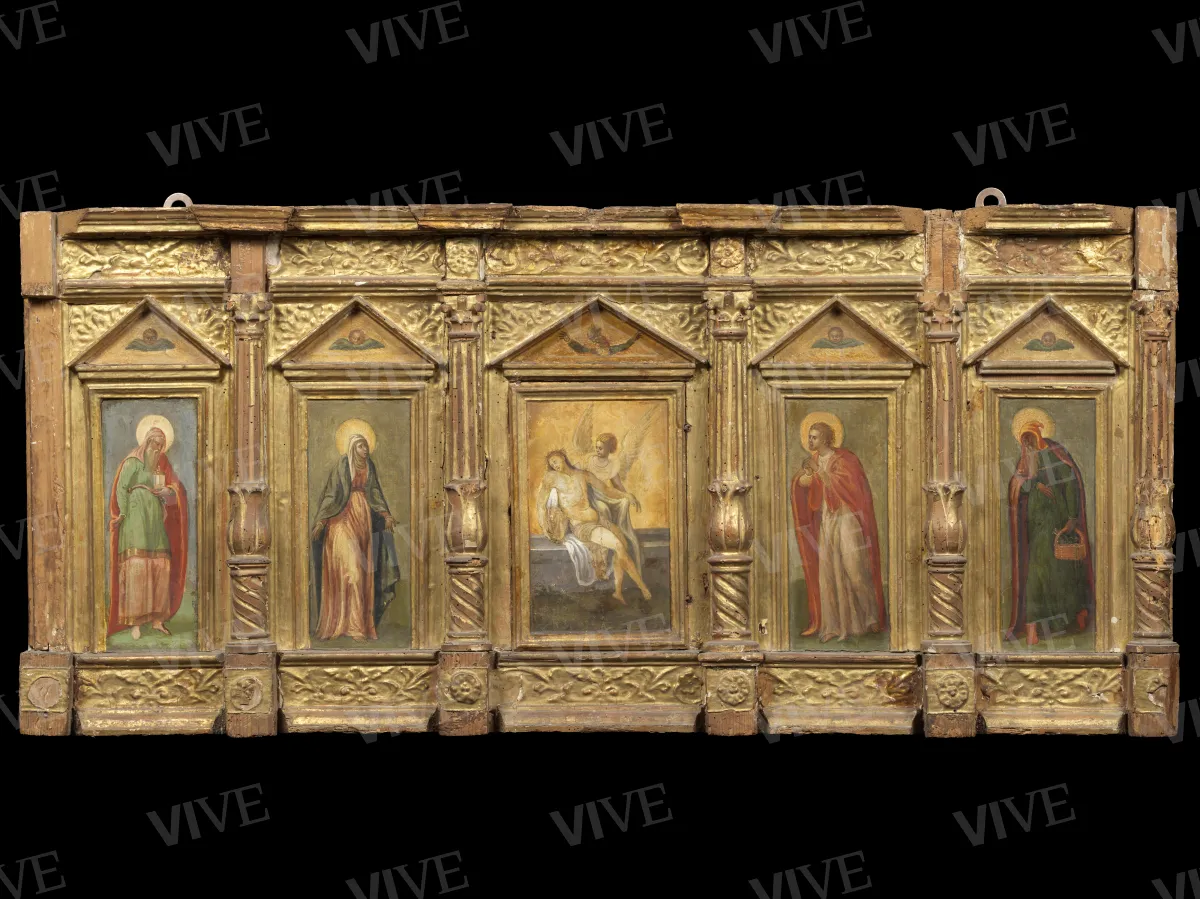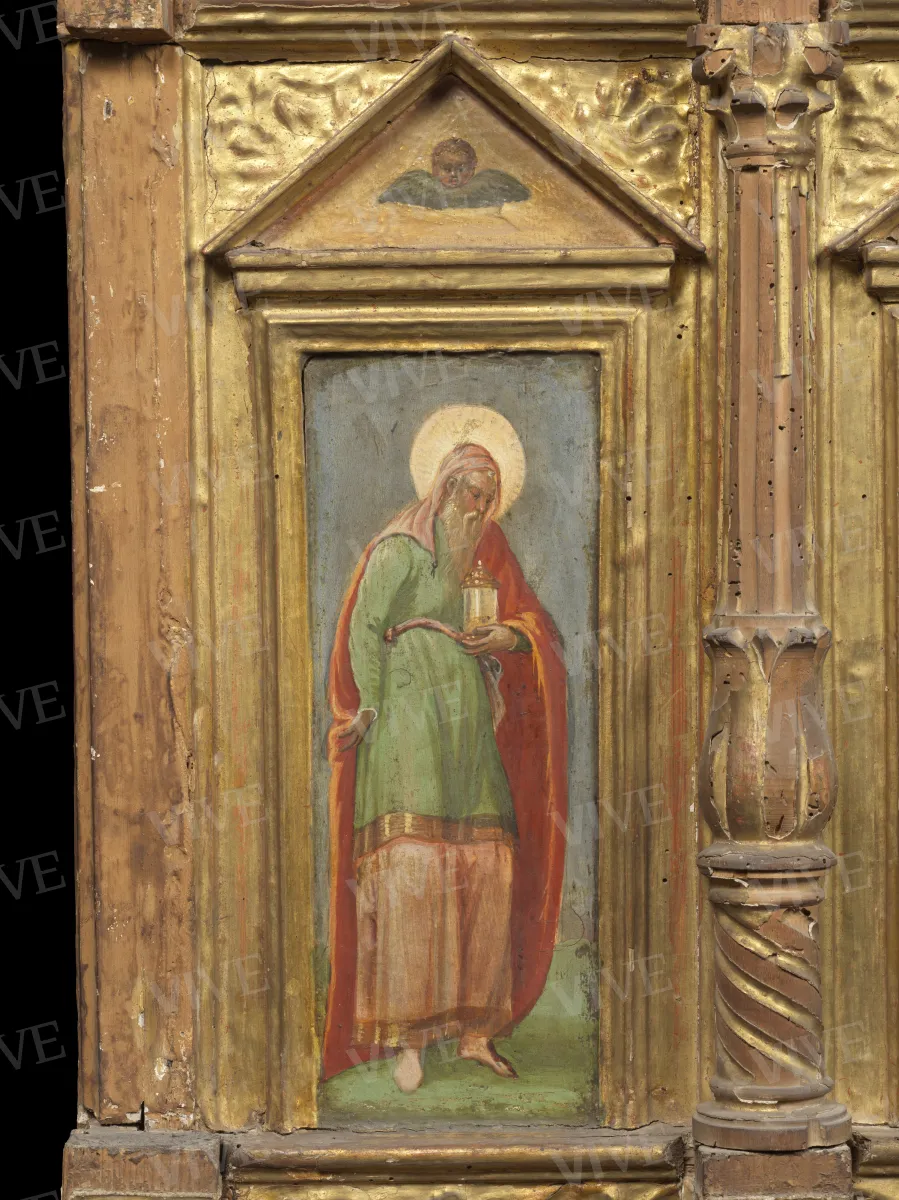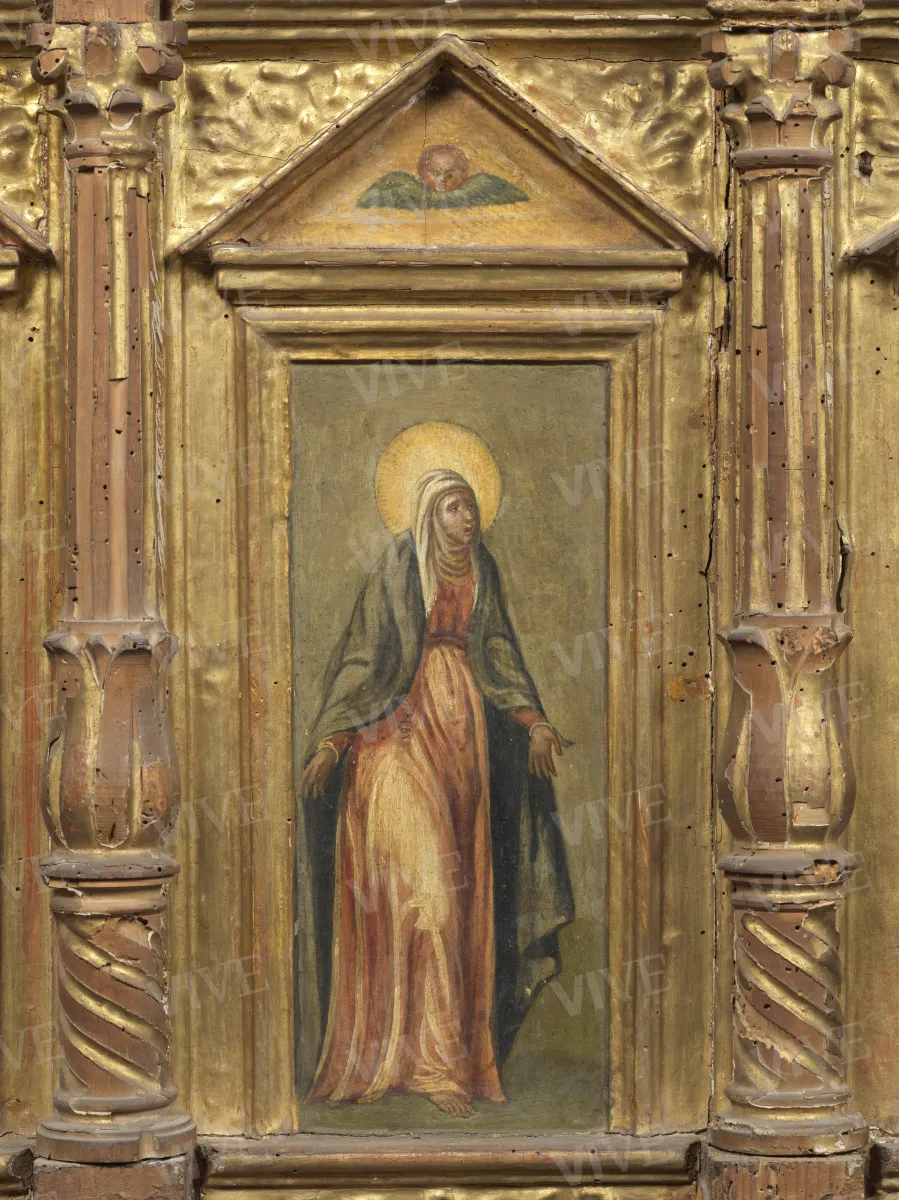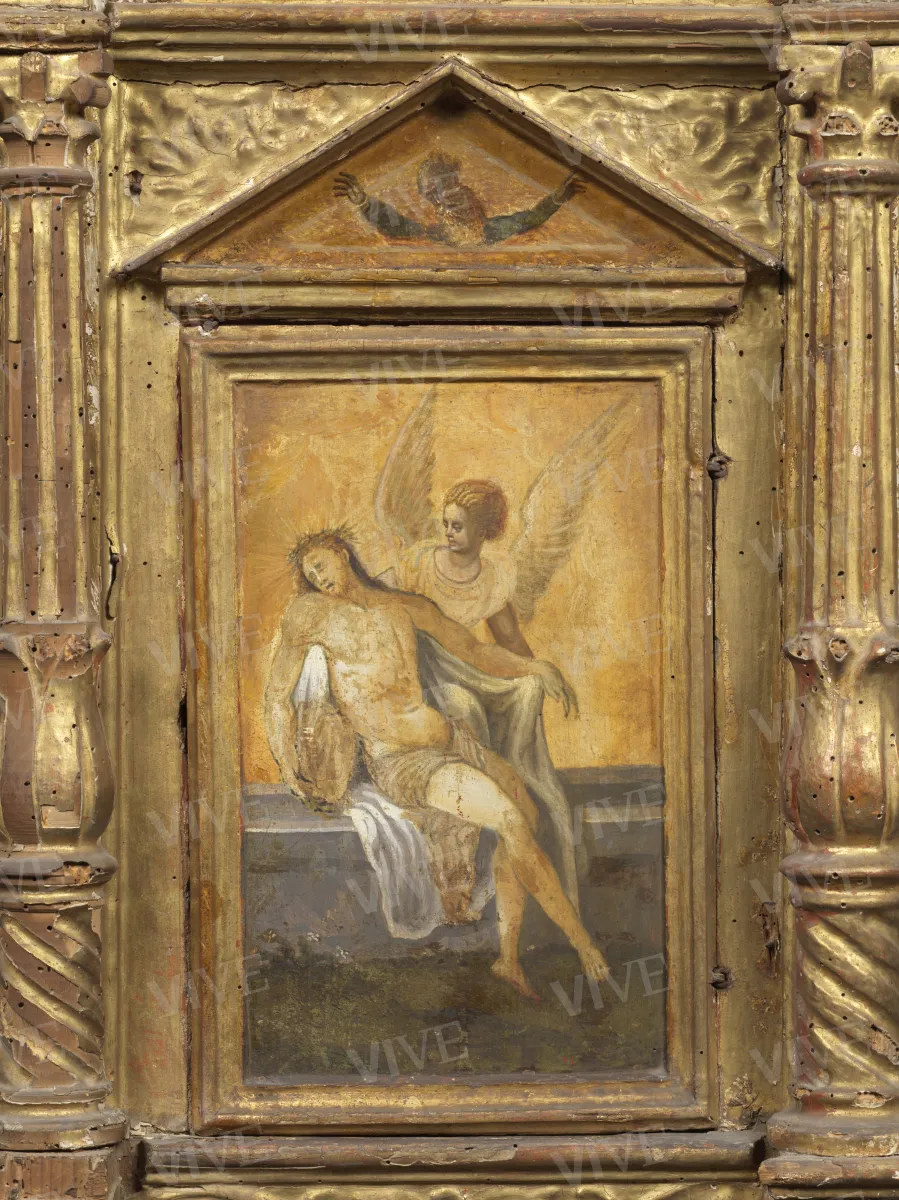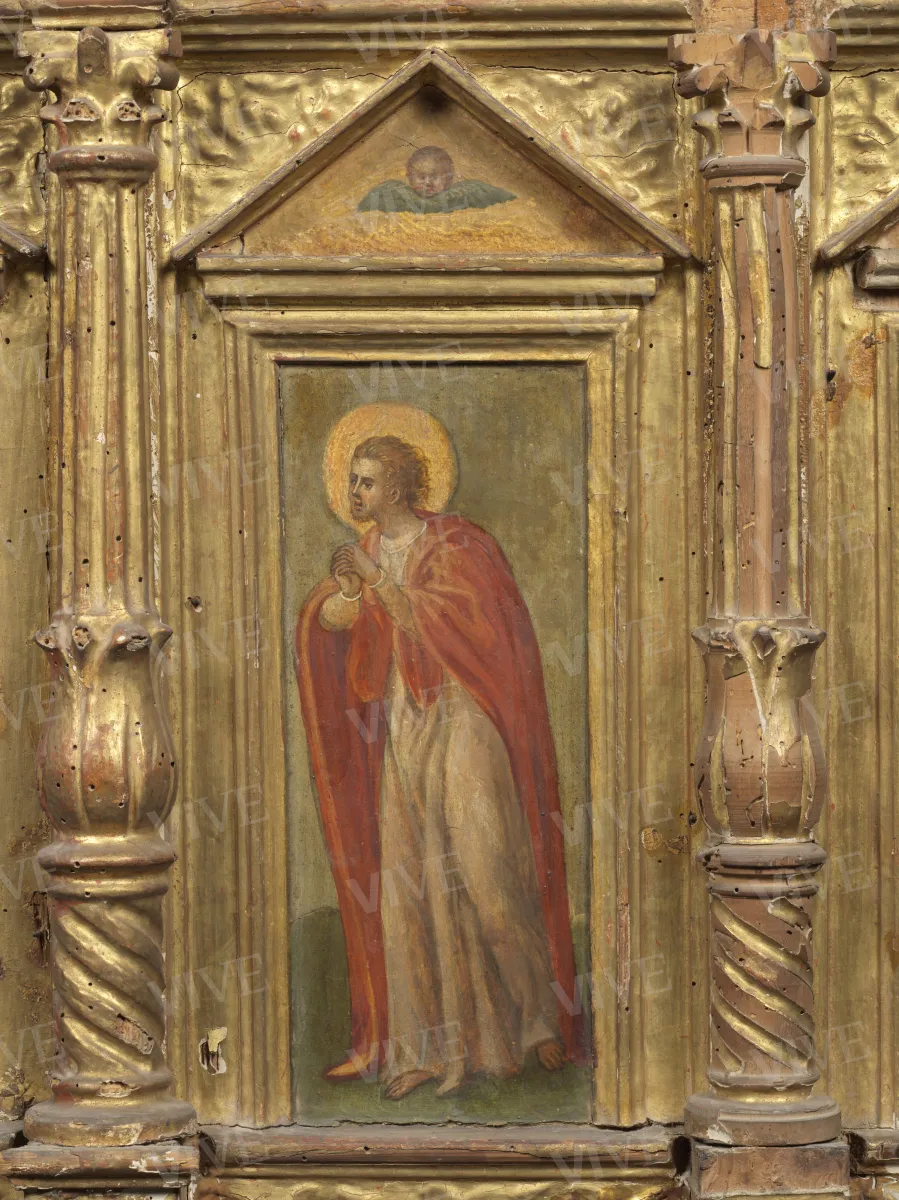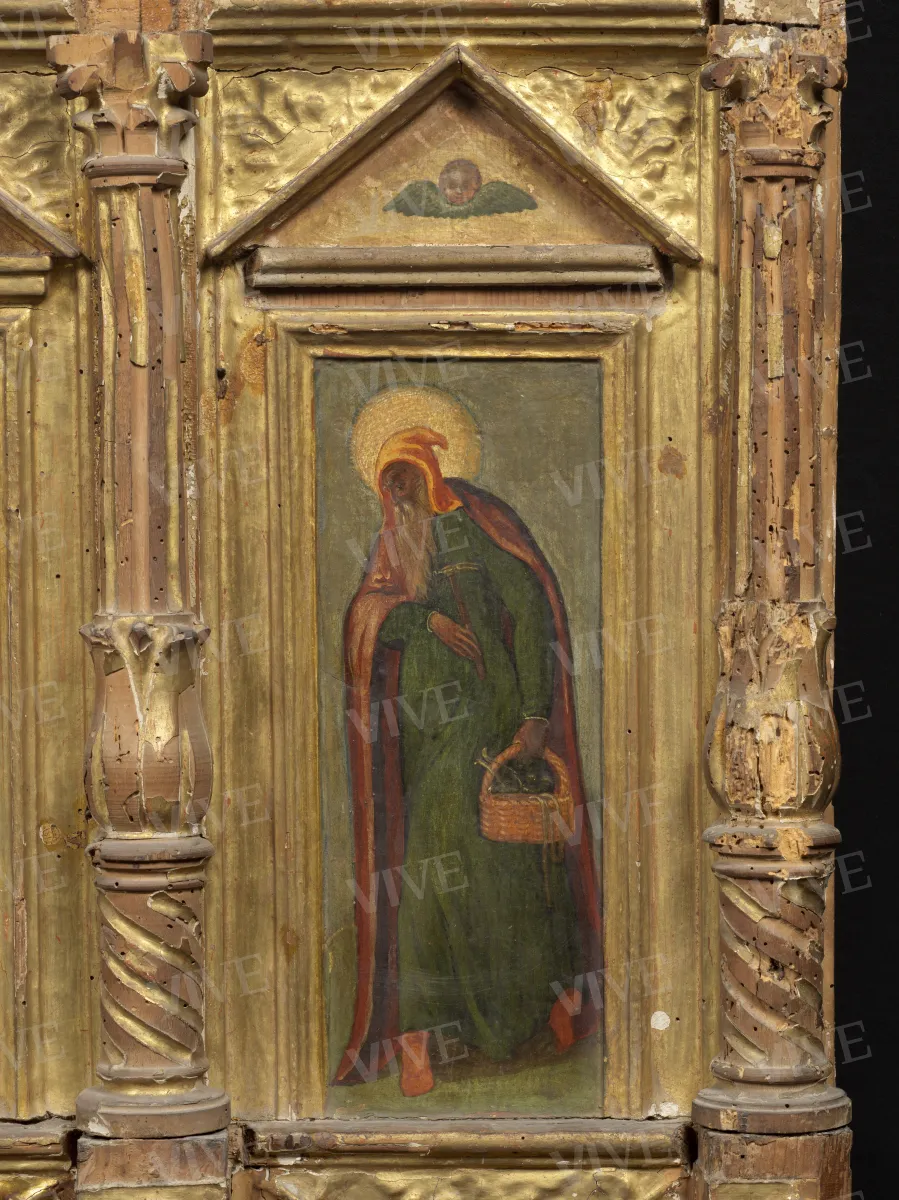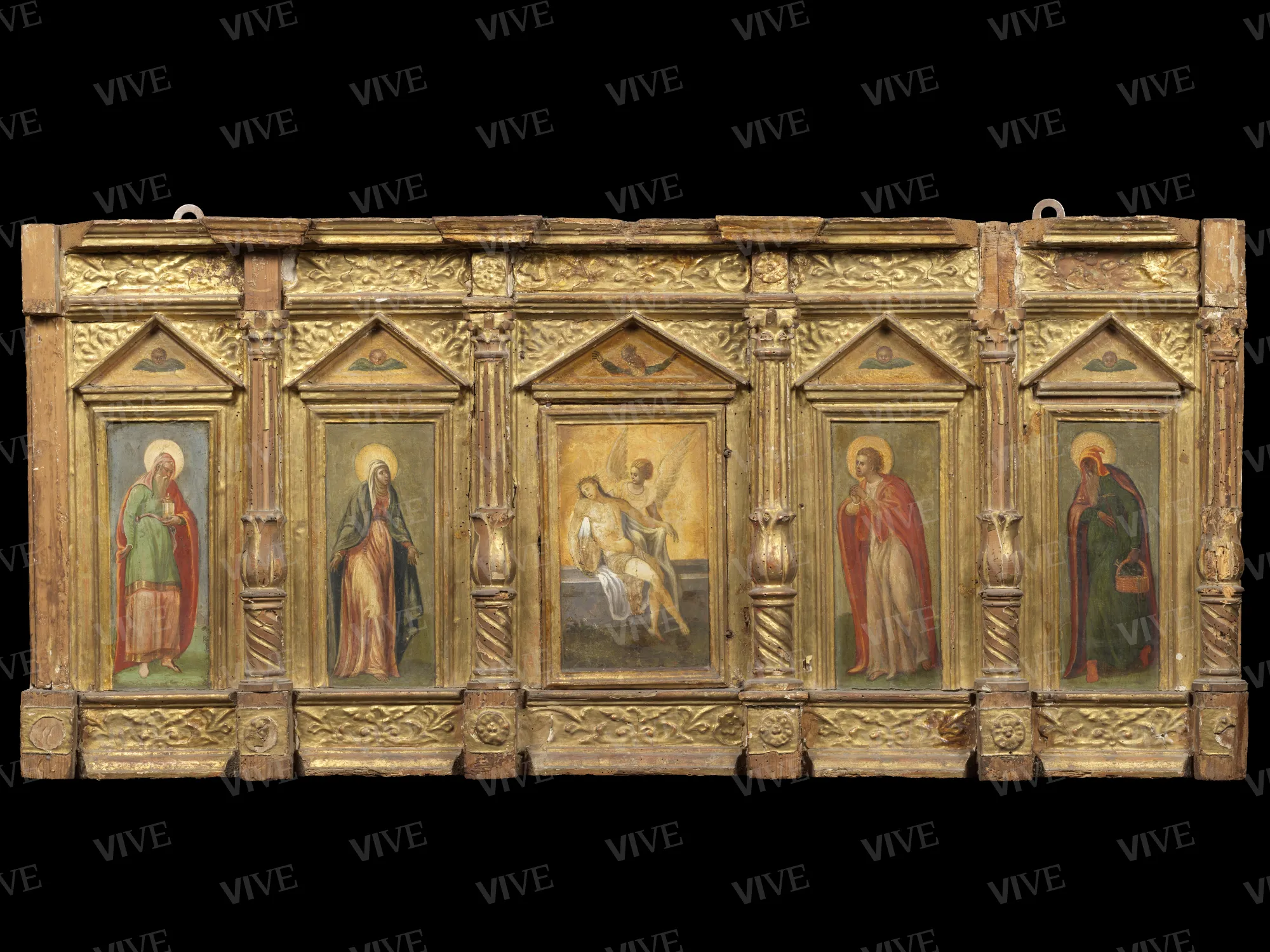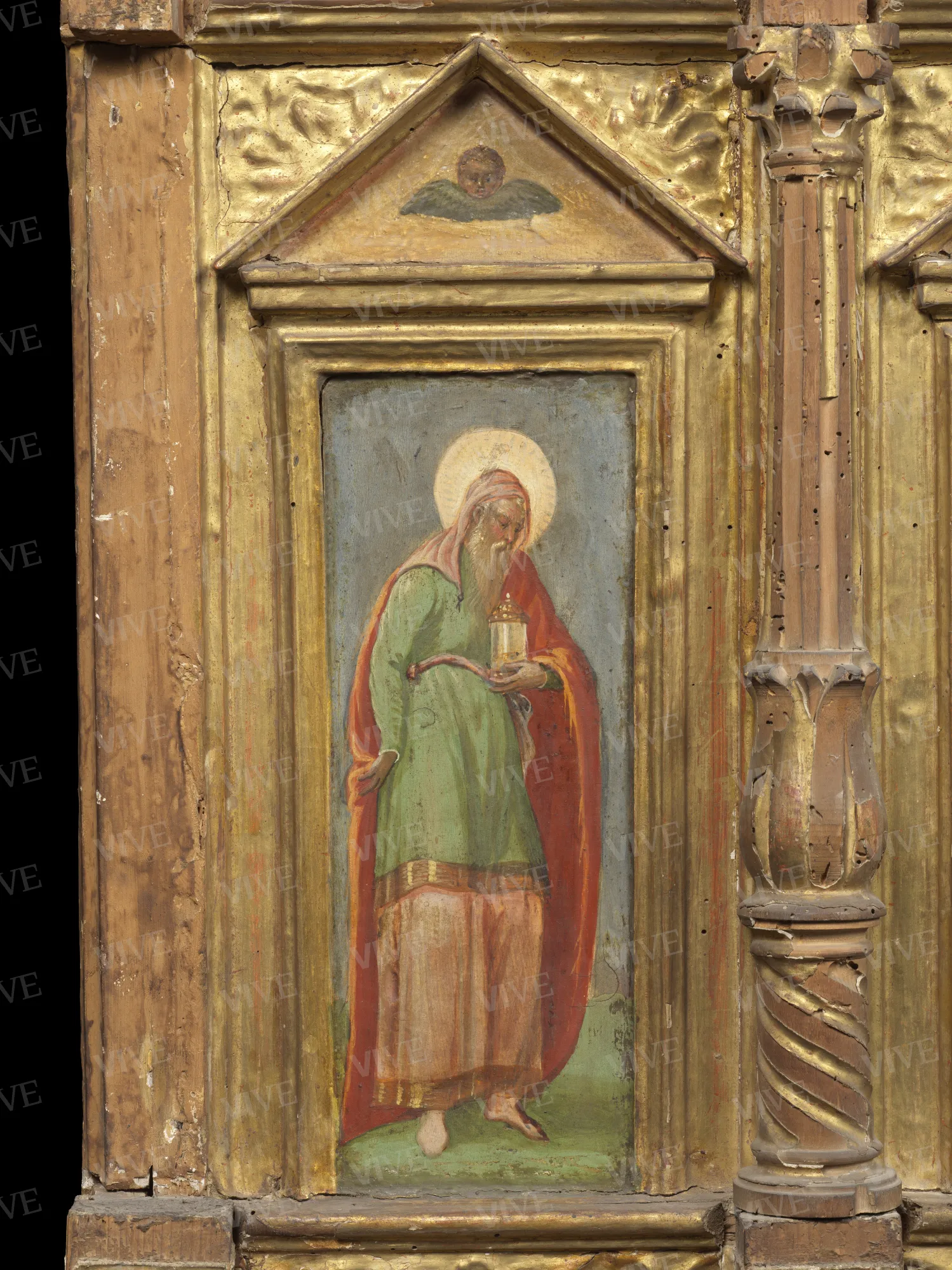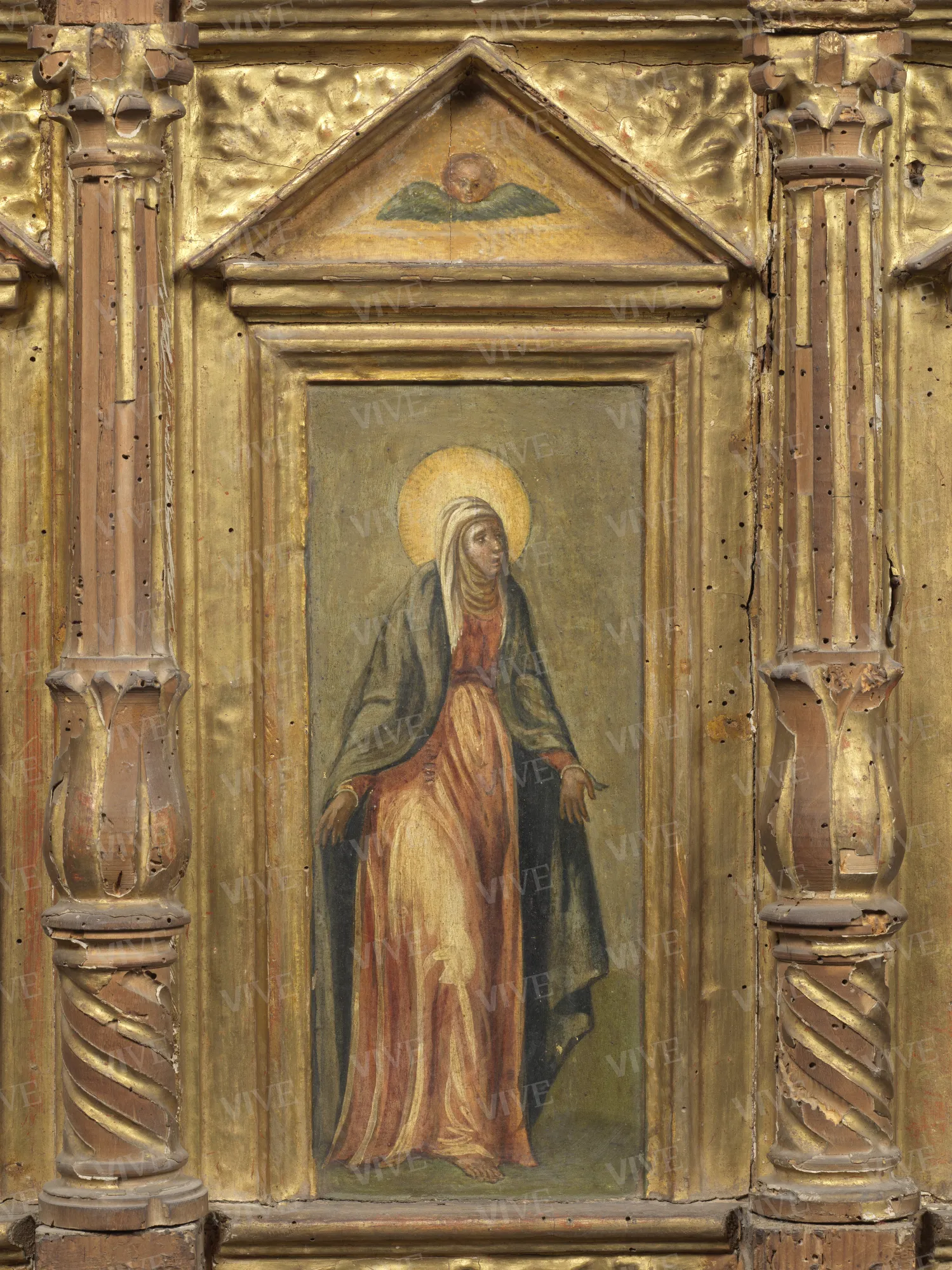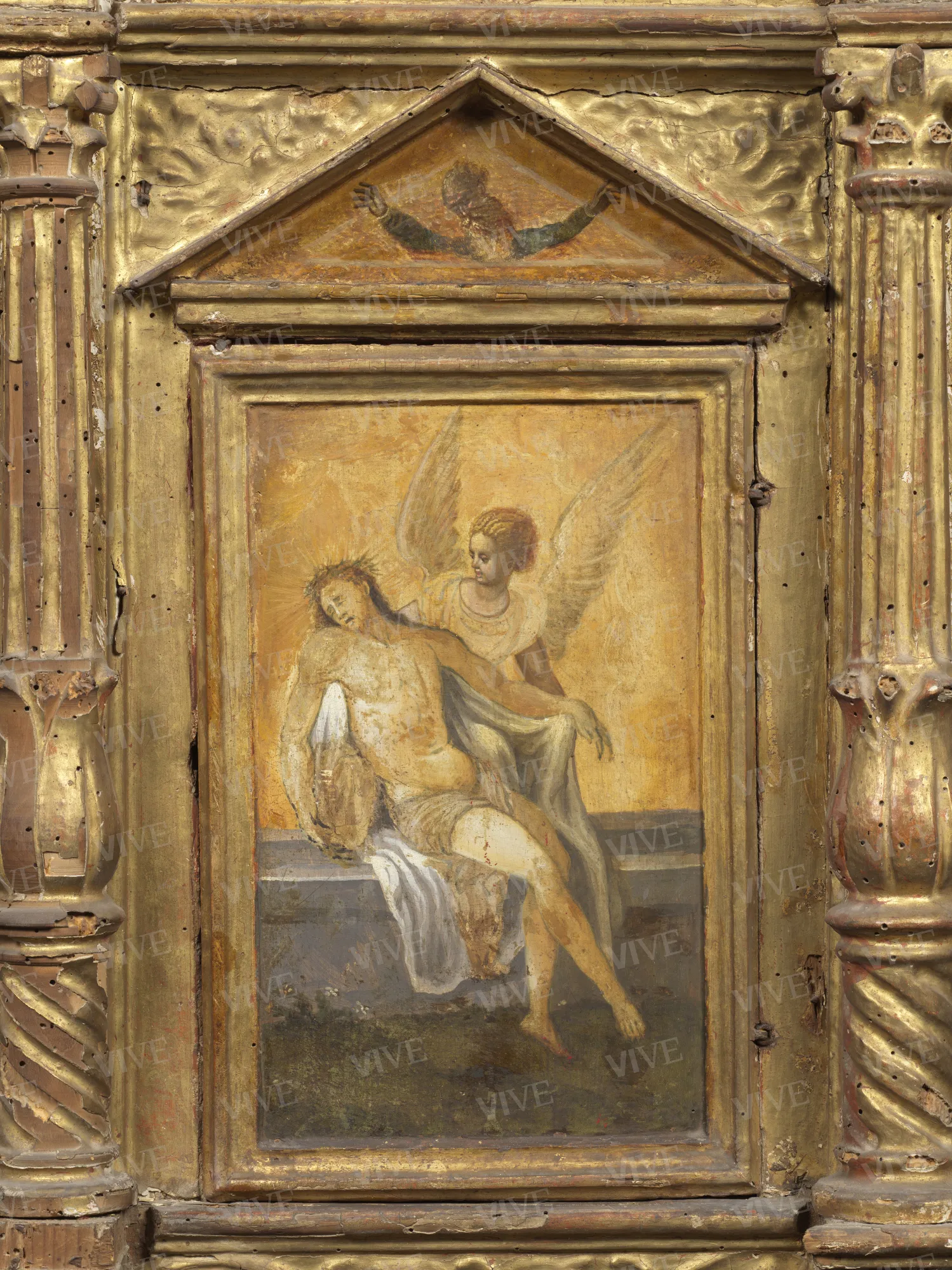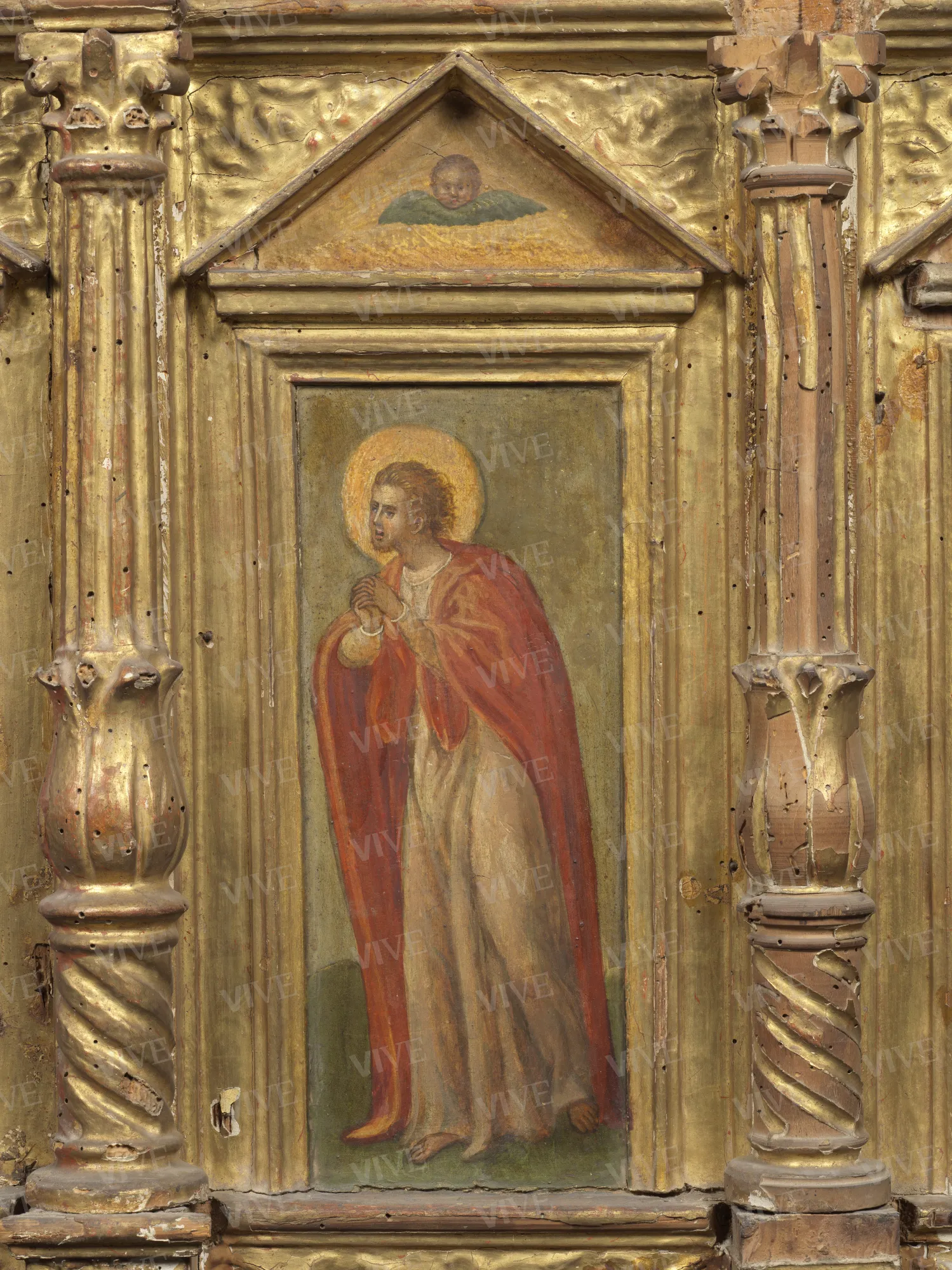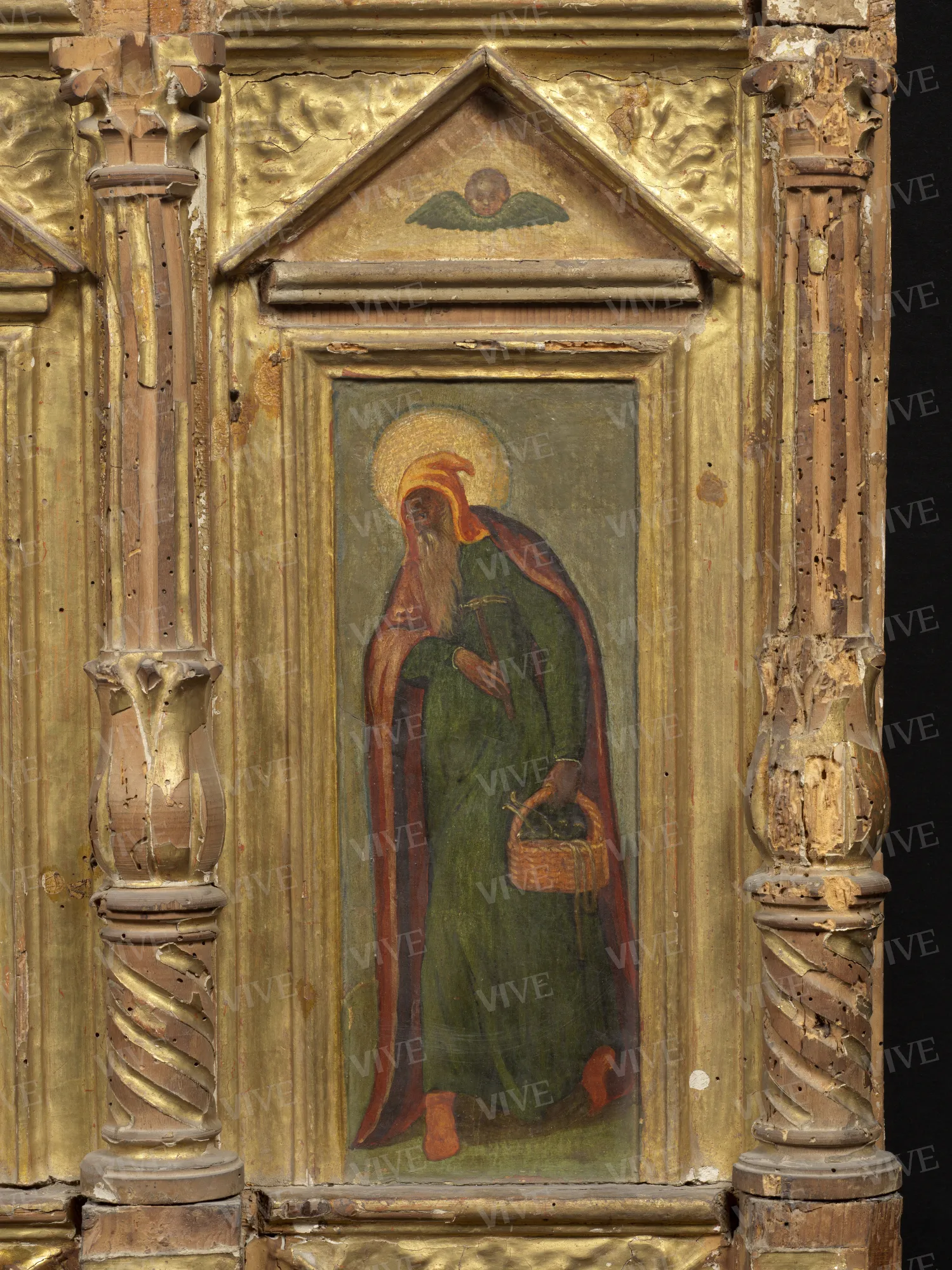Eucharistic tabernacle
Milieu Domínikos Theotokópoulos called El Greco Third quarter of the 16th century
The tabernacle, incorporated into the Museo di Palazzo Venezia through the bequest of Henriette Tower and George Washington Wurts in 1933, has undergone alterations from its original state. It features the central depiction of the deceased Christ supported by an angel, with side compartments illustrating Joseph of Arimathea, the sorrowful Virgin Mary, the mourning Saint John the Evangelist, and Nicodemus. The formal and technical attributes of the wooden frame and the paintings suggest an association with the workshop of Cretan artists affiliated with Domínikos Theotokópoulos, also known as El Greco.
The tabernacle, incorporated into the Museo di Palazzo Venezia through the bequest of Henriette Tower and George Washington Wurts in 1933, has undergone alterations from its original state. It features the central depiction of the deceased Christ supported by an angel, with side compartments illustrating Joseph of Arimathea, the sorrowful Virgin Mary, the mourning Saint John the Evangelist, and Nicodemus. The formal and technical attributes of the wooden frame and the paintings suggest an association with the workshop of Cretan artists affiliated with Domínikos Theotokópoulos, also known as El Greco.
Details of work
Catalog entry
The tabernacle is presently in a deteriorated state of conservation, affecting both its wooden structure and pictorial decoration. It exhibits noticeable retouching and repainting, and the hole for the lock of the Eucharistic door in the center has been filled in.
The structure is characterised by elegant Corinthian columns that frame the panels, each surmounted by tympanums. On the left, the panels depict Joseph of Arimathea and the Virgin Mary, while on the right, they show Saint John and Nicodemus. These panels are placed under pediments adorned with cherubs and flank the Eucharistic door, where the dead Christ is supported by an angel, with God the Father awaiting with open arms visible in the pediment. This arrangement forms a scene of the Lamentation divided into five panels, embellished with numerous pastiglia decorations. Federico Zeri (1955, 11) attributed the tabernacle to the Venetian–Dalmatian school. The type and decorative elements of the wooden frame, along with the stylistic characteristics of the paintings, associate this tabernacle with a large group of similar examples, including those in the church of Santa Maria Maddalena in Montefalco, the library of the Eremo di Camaldoli, the Pinacoteca Comunale in Bettona, and the Polo Museale in Castignano. Critics have identified the direct involvement of Domínikos Theotokópoulos, known as El Greco (1541–1614), in these works. These works have been attributed to the workshop of Cretan artists working under a Greek master who was highly active in Venice and Rome during the 1560s and 1570s (Traversi 2021a; Lovato 2021, 120–145). The figures in the tabernacle exhibit a neo-iconic style, characterized by elongated chrysalis-like proportions and shapes, and a pronounced mystical tone, reflecting El Greco’s painting style. During his time in Italy, the artist likely had a large circle of collaborators (Traversi 2021a; Traversi 2021b, 123).
Lorenzo D'Amici
Entry published on 12 June 2025
State of conservation
Very compromised.
Provenance
Rome, George Washington Wurts and Henrietta Tower collection;
Rome, Museo Nazionale di Palazzo Venezia, donation by Henrietta Tower Wurts, 1933.
References
Zeri Federico (a cura di), Catalogo del Gabinetto Fotografico Nazionale. 3. I dipinti del Museo di Palazzo Venezia in Roma, Roma 1955, nn. 175-180, p. 11;
Lovato, in Catani Vincenzo, Lovato Guerrino, El Greco. I tabernacoli italiani di Bettona e Castignano, Treviso 2021;
Traversi Francesco, Tabernacoli “greci” nell’Italia centrale del Cinquecento e due tavolette firmate "δομίνικος θεοτο.ς", in Lobefaro Mariella, Puppi Lionello (a cura di), El Greco in terre d’Umbria. Per una nuova geografia dei soggiorni di Domínikos Theotokópoulos tra Creta e l’Italia, Atti del convegno (Bettona, 28-30 settembre 2018), Biella 2021, pp. 59-80, (Traversi 2021a);
Traversi Francesco, in Scipioni Michel, Peri Marinella, Cortoni Claudio Ubaldo (a cura di), Sacra bellezza. Tesori svelati e percorsi inediti nell'Eremo di Camaldoli, catalogo della mostra (Camaldoli, Eremo, 30 luglio-19 settembre 2021), Bibbiena 2021, pp. 122-123, n. 3, (Traversi 2021b).

